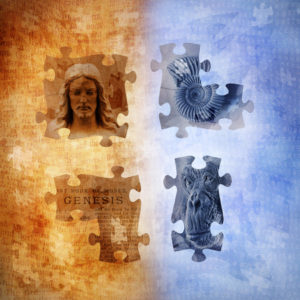Beyond the Risen Son

BioLogos published a series of articles that critiqued New Atheism and the movement’s use of flawed reasoning in its portrayal of religion and science. The series reviewed an essay by Stephen Snoblen, a historian of science, about New Atheist views of science and religion. One article in the series, “Science, Religion and New Atheism: Introduction,” made a distinction between the militant atheism of New Atheists and more moderate atheists. Snoblen said that many of the moderate atheists seek to distance themselves from the perceived excesses of the New Atheists. So what he asserted in his essay applied primarily to New Atheists. Snoblen thought some of the best, and most sympathetic, studies of the relationship between science and religion were written by individuals who would be moderate atheists, skeptics or agnostics.
The November 2006 issues for Wired magazine ran an article entitled, “The Church of the Non-Believers” which Snoblen said was important in canonizing the name and mission of what is called “New Atheism.” Not so coincidentally, The God Delusion by Richard Dawkins had just been published the month before. By early December, it had reached number four on the New York Times non-fiction bestseller list; it went on to sell millions of copies. There have been many others besides Dawkins articulating the central tenant of New Atheism, which Snoblen succinctly stated as: science is good and religion is evil. There is no afterlife; no heaven; no hell. “Religion must be abolished. The only thing that matters is science.”
While this is based upon views of “religion” and “science” that fit nicely with its atheistic worldview, it is not universally accepted as true. The New Atheist sense of religion is one that sees any acceptance of the supernatural as “religious.” And “science” is necessarily positivistic and materialistic. Within the above-linked article, “The Church of the Non-Believers,” Dawkins was quoted as saying the “big war” between science and religion is not between evolution and creationism. Rather, it is between naturalism and supernaturalism. “Sensible” religious people believe in supernaturalism; however “That puts me on the other side.”
This sense of religion is based upon the views of the founder of British anthropology, Edward Tylor, who theorized that all religions were based on animism. He defined religion as “the belief in spiritual beings.” According to Tylor, animism had two components: a belief that the human soul survived bodily death, and a belief in other spirits, including deities. The belief in spirits and deities was an outgrowth of believing in souls. There was a progressive development from the veneration of objects within nature (animals, trees, etc.), to venerating specific spirits that were less attached to objects (gods, devils, fairies, angels). As these gods were associated with good and evil, or as “first causes” of creation, they were seen as highly powerful beings—and even as a Supreme Being. Tylor said: “Animism has its distinct and consistent outcome, and Polytheism its distinct and consistent completion, in the doctrine of a Supreme Deity.”
Another problem lies with a New Atheist sense of faith that further distorts religion. Famously articulated by Dawkins in his 1976 book, The Selfish Gene, he said faith “means blind trust, in the absence of evidence, even in the teeth of evidence.” This is a definition that few religious believers would accept. It is unquestioning belief; faith as belief with a complete absence of evidence. Snoblen said the New Atheist definition of faith was a straw man, applied to Christianity “with hostile intent.” The geneticist and former Head of the Human Genome Project, Francis Collins, said this sense of faith was not the real thing.
[Dawkins’s definition] certainly does not describe the faith of most serious believers throughout history, not of most of those in my personal acquaintance. While rational argument can never conclusively prove the existence of God, serious thinkers from Augustine to Aquinas to C.S. Lewis have demonstrated that a belief in God is intensely plausible. It is no less plausible today. The caricature of faith that Dawkins presents is easy for him to attack, but it not the real thing. (Francis Collins, The Language of God, p. 164)
A better definition of faith suggested by Snobler would be “Faith is belief in the absence of complete evidence.” Conceive of faith as existing on a continuum. On the one side is blind faith; faith with no evidence. Snobler said he was not aware of any believer whose faith could be defined that way, but it was a logical possibility. At the other extreme would be positivism, which argues there can be no belief without evidence. “Somewhere on the continuum between these two extremes we could place ‘informed faith,’ belief with partial evidence.”
As Ian Barbour discussed in his book, Religion and Science, science is not as objective as positivists believe; and religion is not as subjective. He said positivists portray science as objective, meaning its theories are “validated by clear-cut criteria” and tested by their agreement with “indisputable theory-free data.” Both the criteria and the data are held to be “independent of the individual subject” and not affected by cultural influences. Religion, on the other hand is seen as subjective. But since the 1950s, these contrasts have been increasingly challenged. Science was not as objective as had been claimed by positivism.
Scientific data are theory-laden, not theory-free. Theoretical assumptions enter the selection, reporting, and interpretation of what are taken to be data. Moreover, theories do not rise from logical analysis of data but from acts of creative imagination in which analogies and models often play a role. Conceptual models help us to imagine what is not directly observable. (Religion and Science, p. 93)
Barbour said many of the same characteristics are present in religion. While religious beliefs are “not amenable to strict empirical testing,” they can be approached in a similar way. “The scientific criteria of coherence, comprehensiveness, and fruitfulness have their parallels in religious thought.” Following the thought of Thomas Kuhn in The Structure of Scientific Revolutions, Barbour said religious traditions could be seen as “communities that share a common paradigm.” Kuhn’s book asserted that both theories and data in science were dependent upon the ruling paradigms of the scientific community.
In the choice between paradigms, there are no rules for applying scientific criteria. Their evaluation is an act of judgment by the scientific community. As established paradigm is resistant to falsification, since discrepancies between theory and data can be set aside as anomalies or reconciled by introducing ad hoc hypotheses.
In The Big Question, Alister McGrath said New Atheism was really an antiquated rationalism “which has failed to catch up with the philosophical revolution of the twentieth century” in the pivotal works of philosophers such as Martin Heidegger, Ludwig Wittgenstein and Hans-Georg Gadamer. McGrath said this was good news for both science and religion, which were both now free of the rationalist dogma “that human reason can lay down what the universe is like. It does not, and cannot.”
Reality is too complex to be comprehended by any form of intellectual tunnel vision. We need multiple windows on our complex world if we are to appreciate it to the full and act rightly and meaningfully within it. Now there is nothing wrong with seeing only part of the truth, so long as we realize that this is an incomplete vision. The problems begin if we think that reality is limited to what one tradition of investigation can disclose, and refuse to listen to any other voices than our own. (The Big Question, p. 205)
McGrath gave an interesting lecture at Lanier Theological Library on Richard Dawkins, C.S. Lewis and the meaning of life. Addressing the question of whether faith was reasonable, McGrath noted Dawkins thought we could only believe what can be proven by reason or science. His above quote on faith illustrated this. But Lewis believed most of the important things in life were beyond rational or scientific proof. He famously said: “I believe in Christianity as I believe that the Sun has risen, not only because I see it, but because by it, I see everything else.”



